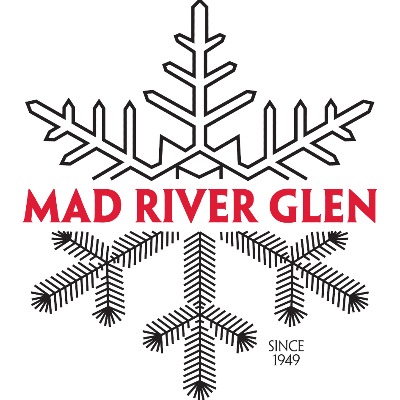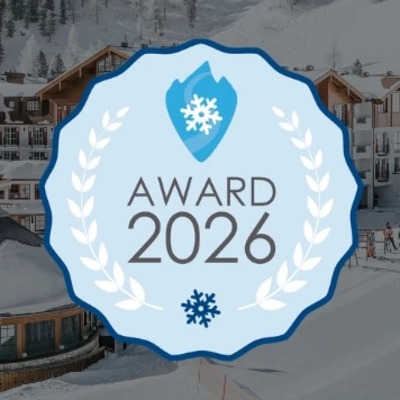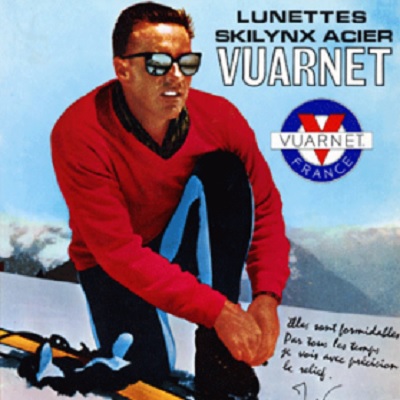Val Thorens Celebrates 50 Years

Dive into the history of Val Thorens and discover the pioneer mindset that distinguishes it.
Nobody wanted this resort. Nobody wanted to finance its construction, live in it, or work in it.
It was too high, too far, too cold, too windy and too risky. A hostile, treeless environment where green was more of a wistful memory than an actual colour.
And yet, 50 years on, it is one of the most famous ski resorts in the world. In the end, the first buildings sprang up like a boomtown during the gold rush. But how long would it last? “You need to bear in mind how bitter the dispute was within the département, and that the conflict would continue for many years.
Savoyard councillor, who was also a minister, was undoubtedly very angry whenhe stated on national radio in 1981 that the order should be given to fighter planes to demolish Val Thorens!”, remembers Pierre Josserand, president of the SETAM ski lift company in his book that recounts the resort’s origins.
And even worse, the resort was scientifically condemned! Philippe Lebreton, a biology professor fromLyon (quoted by Jean Carlier in his book ‘Vanoise, victoire pour demain’), warned of the permanent life-threatening dangers for inhabitants due to anoxia and high-altitude diseases, as well as the risk of cyanosis for young children, resulting from a lack of oxygen created by the melting of organic waste in the spring (these alarming predictions proved to be untrue: Val Thorens is home to a nursery school full of healthy children!) The banks quickly pulled out of the project…
Now, press fast forward on your cassette player (the one with auto reverse) from December 1972, Val Thorens’ official opening date, to today… Val Thorens is the highest ski resort in Europe, boasting a ski experience unlike any other from the end of November until the start of May.
With ultra-modern (and innovative) ski lift facilities, it proudly displays seven Best Ski Resort in the World awards on its mantlepiece, and totals 1.9 million skier days every season.
What is truly fascinating isn’t the detail of everything that happened, the chronology of facts and events, the amazing story told in the books, or the evidence given with hindsight that each move led logically onto the next. On the contrary, to understand Val Thorens, you need to take a step back from the timeline and take a step closer to its spirit. In a nutshell, the state of mind of those who built it and have made it what itis today.
When you spend time up there, you can almost feel its soul, its unique DNA, its secret code…. “If you think in a matter-of fact way, you won’t understand this place… there’s something impalpable about it… a kind of magic”, as Kevin Berthon, the resort’s young ESF (French Ski School) director tries to explain.
Built so quickly, and at such heights in the fast-paced context of the 30-year post-war boom, the spirit of its pioneers would have a profound impact on the ski resort (some would call it a new town, an outpost, a utopia even), its life force, creativity, and the determination required to ensure it would run smoothly and stand the test of time.
And everything is intensified at altitudes of 2,000 metres, both human energy levels and the power of nature. “When it was stormy outside, we couldn’t do anything with the children. We used to look at the kids’ play area in the Maison de Val Thorens that houses the Tourist Office”, remembers ski instructor, Luc Dupont. “I like these hostile natural environments, it’s like the Roaring Forties when you pass Cape Horn”, says the man who has single handedly sailed around the globe twice, “back then, they didn’t use to clear the snow, they went through with the snow cutter-blower, digging out trenches”. The cold snow, which is amazing for skiers, falls in abundance here. “Beyond the quantity, the quality of the snow is magical”, explains Benjamin Blanc, director of the Belleville Valley Piste Maintenance Service, “thanks to the altitude and its northern exposure”, adds Gilles Jay, whose team grooms 80 to 90% of the ski area every day… until May 8th. There’s snow, and plenty of it!
When you browse through the old photos, it looks like everyone always had a shovel in their hand. Everything needed to be cleared of snow – the stairs, the path to the apartment building, the area in front of the shop window, the car, the snow that had fallen from the rooftops etc. The delighted local children were overjoyed in this snowy setting. “We spent our winters with our ski coaches and our mates”, explains Antoine Diet (former professional freerider turned shopkeeper) excitedly, “we skied all day, and after that we jumped off balconies into the snow… we ran up the fire exits in the apartment buildings, and jumped out onto the snow; there was so much of it! We went to school on our toboggans, or on the back of a snowmobile, then jumped off the school roof at breaktime…. We lived in a snow-white landscape for six months of the year. I was practically born in the snow, and the first time I saw grass I didn’t want to get out of the car as I didn’t know what it was!”
The 6-tipped snowflake is a marvel of nature, and exquisite ephemeral creation of the sky. It is the raw material on which ski resorts and the winter sports industry were built. In the ‘60s, France was looking for champions, resorts that could compete against each other in the “international ski battle” (as explained in Val Thorens’ first colour brochure, which came out in 1969, before the building work even began). It was a done deal, the various stakeholders had all agreed (Pierre Schnebelen, the visionary developer, and Joseph Fontanet, politician, and mayor of Saint-Martin-De-Belleville). Pierre Josserand, a newly qualified engineer from the National Conservatory of Arts and Industry, was given the task of making the dream a reality.
He began working, firstly from his office in Paris, then later from a portacabin: “There was a small team of us on site and we still have fond memories of those moments spent together, at the end of a road up at analtitude of 2,300 metres, with the odd visitor here and there - especially the marmots who would even pop into our office from time to time”, he remembers.
The very first restaurant, the very first hotel, the very first apartment building, the very first ski lift…. And with each new addition, came the need for more snow to be cleared. Written accounts and photographs all highlight the snow, lots of it, everywhere. Living on
Antarctica means you are dependent on links with civilisation which, in Val Thorens, aren’t possible by boat or by plane, only by road. And what a road it is! Hairpin bends, avalanche risks…there are only nine short kilometres between Val Thorens and Les Menuires; nine kilometres but two completely different worlds: “after a few hairpin bends, you enter a different world”, acknowledges Laurie Chatelet, SETAM’s operations manager. Just a few bends is all it takes to reach the moon (a word often used by locals to describe Val Thorens, and “being on the moon requires extra-terrestrials”, points out Luc Dupont, ESF ski instructor), a white desert, with perfectly positioned slopes for a skiResort.
Visionary entrepreneur, Pierre Schnebelen came up with the idea of constructing buildings and ski lifts here. He imagined its “configuration with a central focus point (rond-point des pistes) which the sectors of the ski area lead out from: 3 Vallées sector (Péclet and Plein sud), Grand Fond (Moraine and Grand Fond) and the Caron-Boismint sector”, describes Benjamin Blanc.
With “the high mountains within easy reach”, addsKevin Berthon, not forgetting the connection to Les 3 Vallées ski area: “I’ve skied in tons of resorts, but that area is in a league of its own:the runs and the freeride area stretch into infinity. It’s like a massive ski buffet and you always find something you want to eat!”, says Antoine Diet, excitedly.
With so much snow all around, Val Thorens never once hesitated about its future – the vision of what it would become was undisputed, although to see it through took strength at times.…
“When I first moved to Val Tho, people thought I was crazy”, recalls Luc Dupont. “Les Menuires was the resort that the valley locals lived and worked in; you had to be totally crazy to go to Val Thorens!”.
The Belleville Valley residents were a little reluctant to embark on the unpredictable adventure offered to them by Val Thorens, “which left room for those with a sense of adventure… people who didn’t yet realise the difficulties that lay ahead”, remembers Pierre Josserand. Let’s just say that for the pioneers in the ‘70s, with their one-way ticket to Val Thorens, idleness was never an option.
So, a small town was built here, in this high-altitude far west. The watchword wasn’t «go west», but «go high». Was it the conquest of the west? Well, it was west of the Vanoise National Park! After the first banks pulled out, a new one offered its support (La Hénin), and Pompidou gave the green light for the resort construction work to begin, with Val Thorens putting itself on the ski resort map. The location was favourable, the men enthusiastic and creative, the objections and obstacles removed… But still, nothing was easy.
“In 1971 a Monsieur Héry came to visit us in Paris. He was an accountant who had only seen the mountains in films, he didn’t know how to ski, had no experience in tourism, but wanted to open a hotel in Val Thorens. The resort project had got him excited. He went on to build and run Le Val Chavière hotel, throwing himself into it without knowing a thing about it: that was the type of Valthorinois local at the start”, points out Pierre Josserand. On site, shops and businesses started to open: Marc was at the Crêperie des Saints-Pères, Gérard at the Chalet de la Moutière, Chantal at the newsagents, Camille at the ESF French Ski School, Jean Béranger at the Tourist Office, and the Goitschel sisters in the sports shops... Unique personalities for a unique resort.
Val Thorens flourished independent of its big sister, Les Menuires, even if the first ten years
were hard work. “My parents came here because they didn’t have any ties and they were looking for adventure, they were young and wanted to move away from the city. They had nothing to lose and everything to gain”, remembers Cédric Gorini, hotelier and owner of the five-star hotel Pashmina. “I remember when I was little… we didn’t go on holiday because we couldn’t afford to put petrol in the car. For ten years, no finance groups wanted to invest here!”. Whilst the parents went from being adventurers to shopkeepers and entrepreneurs, the childrengrew up on this all-new terrain. “We were left to our own devices, with no real danger - growingup together like brothers and sisters: Yannick, Maud, Aurélie, Julie, Virginie... When school finished for the day, we’d take the Marmottonsdrag lift, pressing on the green button to start it,and we’d have fun for an hour or so! Meanwhile,our parents were struggling, working their socksoff, sick to their stomachs that this adventurewould prove to have no future”.
But the future turned out to be bright! And the spirit that was there from its very beginnings would endure; a winning combination of grape variety and a land that infused the place with character and its own individual style. Today, that flavour is summed up in the term United that is seen next to theresort’s name. “This feeling of being united is far stronger than anywhere else and quite literally means that if someone is in need, we are there to help. We are all there to help each other”,comments Gilles Jay. “We are still subject to bad weather (snow, ice), but we have to open on time… we need this energy, and if necessary, everyone will help! Hierarchy doesn’t count for anything when a pylon needs de-icing”, confirms Laurie Châtelet. More than just a slogan, United is the expression of an original identity that evolved into a modern strategic choice to combine that energy, to correct the mistake of fragmented governance practiced by many French resorts, and which prevents action from being taken due to differing interests. It’s not by chance that Val Thorens was the first resort to combine
databases to get to know its customers better, and improve the quality of service provided. “United, is the heritage of the pioneers that went before us, and their children”, adds Cédric
Gorini, “We’ve all experienced what it’s like to be an outsider, to come from somewhere else, with no long family history, and we’ve all stuck together with the same aim - to create a united front to be passed on to those that come after us”.
On a day-to-day basis, United creates a special vibe; in music it’s called a beat. “I left to make a life elsewhere, but I came back because I missed Val Thorens so much”, reveals Antoine Moga, a young ski instructor, and a pure product of Val Thorens. “There’s something very specific, so unique… it’s a village, a family, but the whole world at the same time… it’s a totally different world… it’s like a bubble, that exudes an amazing sense of freedom…”
You can see the Cime Caron cable car arrival station from miles away. It’s a metal sculpture that bears the tension of the cables that enable the lift to reach altitudes of 3,200 metres, amidst stunning views, carrying 150 passengers weightlessly with each journey through the air. Opened in 1982, this cable car reallyput Val Thorens on the map in terms of international ski resorts.
“The Cime Caron lift wasn’t part of the original plan, as creating runs to come back down from that summit seemed no easy feat”, recalls Pierre Josserand. He remembers how, whilst he was out skiing with Bernard Pomagalski (world-renowned ski lift manufacturer), it all began: “on the flat section, at the bottom of the valley, we were pushing off from on our poles when Bernard said to me: “this would be a great place for a back and forth cable Car”.
At that time, I was looking for something exceptional to set Val Thorens apart. I suggested this cable car, but there were no funds available at the time, so it was refused. I didn’t give up though, and managed to get a financial proposal, with French and international manufacturers from whom I had managed to get competitive rates, ready to build it. In the end, SETAM’s board of directors gave their consent. There was a before and an after Cime Caron for the resort. The change was radical.” Today, the cable car plays an additional role: it is the link in a transport chain that allows passengers to travel between Orelle (in the Maurienne valley) and Val Thorens, whilst keeping their feet dry. The aim is to enable holidaymakers to get to Val Thorens in 30 to 40 minutes from Orelle (which is really close to the motorway and Modane railway station), without using the road.
It is an operating model of the future for resorts who are keen to reduce transport pollution (which, let’s not forget, represents three quarters of CO2 emissions). “Val Thorens aims to remain at the top, developing the technical excellence of its equipment, autonomy and the highest level of customer service… We are passionate about what we do, otherwise it wouldn’t work”, insists Laurie Châtelet. Ambition requires constant nurturing!
Val Thorens is a blank page when it comes to stories of entrepreneurs, skiers, dreamers, inventors, engineers, explorers…. A blank page that, as it fills with tales of adventure, makes way for the next one. There’s no point rounding these recollections off with the words the end. Let’s leave a blank space, where everyone is free to make their mark in the snow.
The resort was born from a vision of the future that it bpursued with relentless energy. The vision takes the view that anything is possible. It’s a rock-solid idea and Val Thorens has proved that. The creation of a new resort is a game of improbable possibilities – like winning ten times over at roulette -, “So many ifs (…) that if left unanswered would have undoubtedly led to the Val Thorens project being cancelled”, sums up Pierre Josserand at the end of his book. The idea of what the future holds only dates back fifty years. “Val Thorens still has a lot of ground to cover”, says Kevin Berthon excitedly, “We’re still at the drawing board, moving forward day by day. Fundamentally, we are people of action”, and “in this resort”, adds Benjamin Blanc, “anything’s possible”.
*














